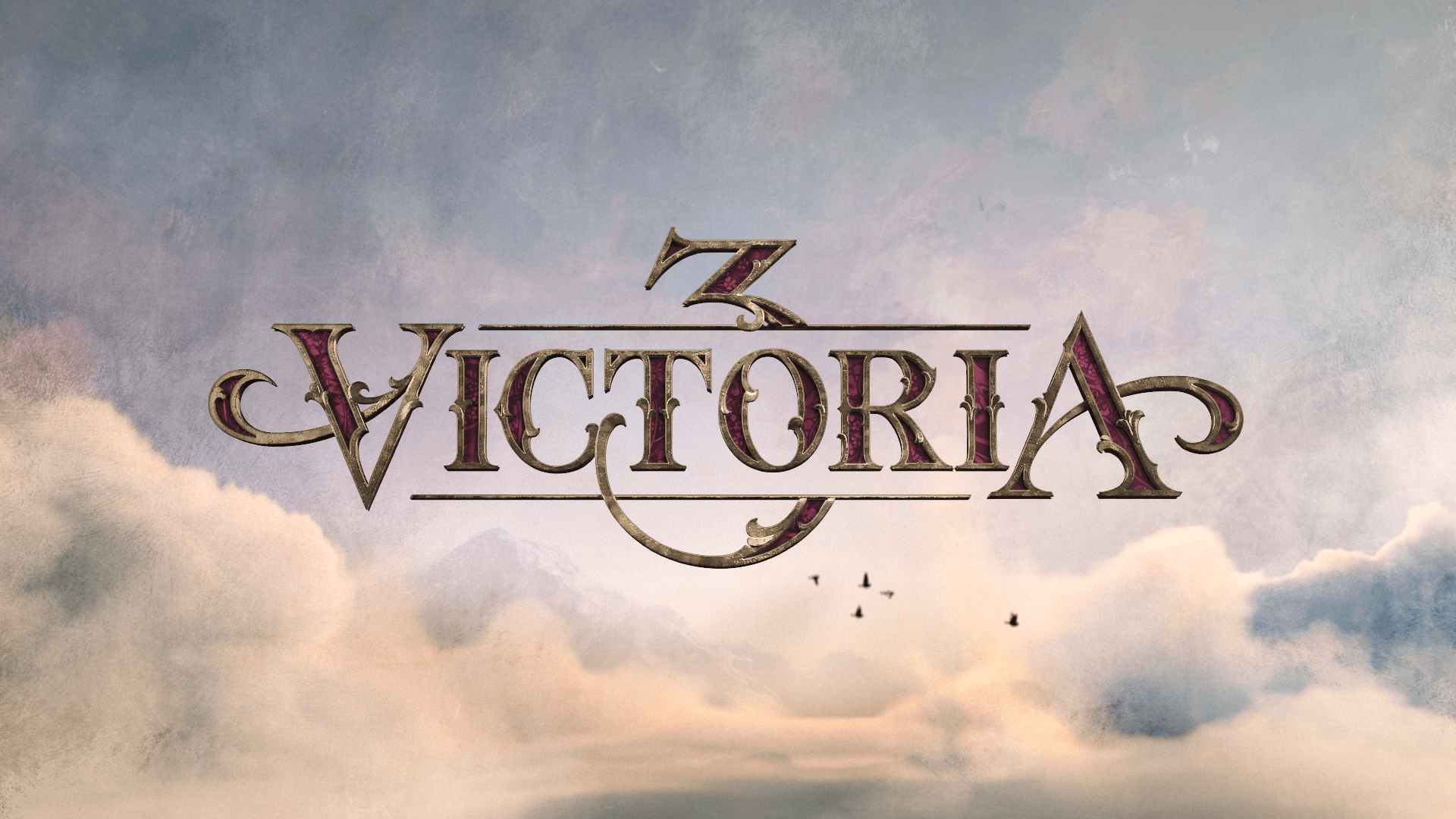Paradox has had quite a bit of success over the past few years, with popular sequels such as Europa Universalis and Crusaders Kings, as well as new titles such as Stellaris, bringing many hours of grand strategy gaming to people’s monitors. Now, they’re turning their hands towards bringing one of their older grand strategy franchises to the forefront in the form of Victoria 3.
The most recent title, Victoria 2, released in August 2010 and is a cult favourite for many who love grand strategy; instead of the emphasis on conquest and warfare in other Paradox titles, the Victoria series focuses on managing the economy, the politics of your nation, and the needs of your populace. War and conquest are still present but are a means to an end, as opposed to the be all and end all. This difference is key and one of the main reasons why the game has such an enduring following.
Victoria 3 then, has big shoes to fill. And it does this, for the most part, very well. This is the Finger Guns review for Paradox Interactives new grand strategy title…
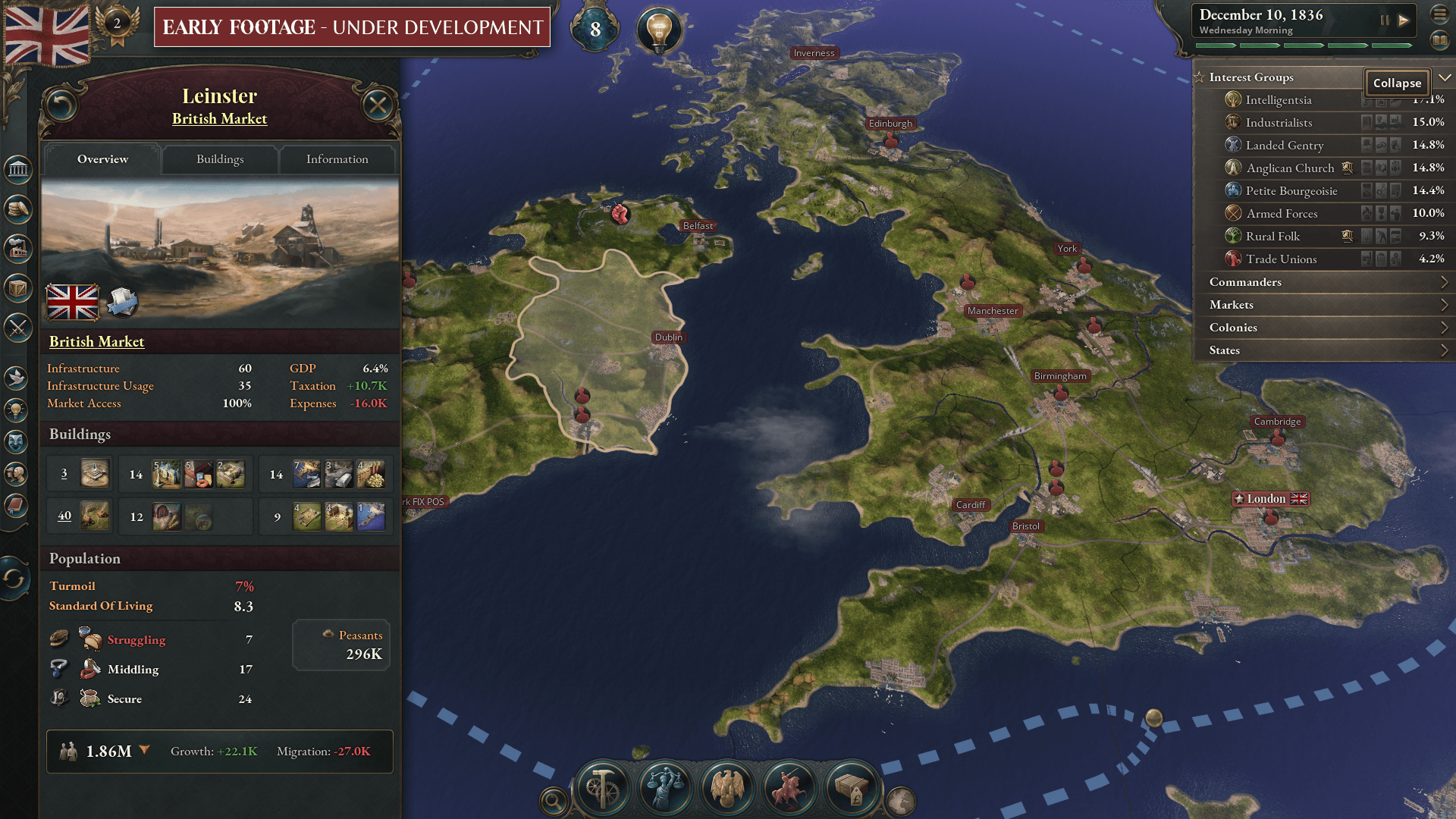
God Save The Queen
Victoria 3 starts in 1836, with Queen Victoria about to ascend to the throne a year later. The world is coming towards the end of the Industrial Revolution, but the second Industrial Evolution is close and great changes to industry, science and society are about to occur. Trains and steamships will begin to appear; the needs of your populace will expand from subsistence to luxury. To begin with, Railways will be limited to very rich nations such as Great Britain, or nations at the forefront of technology such as Belgium, but you can take control of any nation present on Earth at this time period and begin advancing their cause and oversee great changes to swathes of society.
Firstly, Victoria 3 is a complicated game, in some ways even more so than Paradoxes other grand strategy titles. It can be difficult to parse exactly why things occur; why are my peasants revolting? Why is my economy struggling when I’ve expanded production? Fortunately, Victoria 3 has a robust tutorial system, where it shows you how to achieve your goals, but also why; this is a great addition and something that will help to understand the game a lot better. This will be a great help for people new to the game, and although some things can still be slightly confusing at times, it’s a great step in the right direction to making the game accessible for new players.
There are no set goals in Victoria 3; similar to other Paradox titles, you make your own objectives. You can make these military focused, such as conquering other lands and bringing them into your dominion, or they can be more economic focused; maybe instead of warfare, you should just focus on fulfilling your populations needs to see how high you can get them, whilst overhauling the government to your wishes. There are small missions in a journal that you can track, but overall, the goal of the game is what you want it to be; it’s open ended and up to your imagination.

GDP Go Brrr
To begin with, you’ll need to make sure that the basic needs of your populace are fulfilled: food, heating, clothing, and furniture. This can be done by expanding your own production of those resources, or instead importing them from other nations. The latter option is expensive, but if you expand other industries with the aim of export you can keep your money balance in the positive and be able to afford to do this.
Over time, your economy will (for most nations) expand from food production and basic needs such as furniture to more complicated items such as the internal combustion engine, canned goods, and electrical production. This expansion is key, eventually your population will want more luxurious and complicated goods in order to be placated and kept happy, and those goods can be taxed or exported in order to generate more income for your coffers. Doing all of this will raise your Gross Domestic Product (GDP), a measure of how much your overall economy is worth – generally the higher this is, the better.
The economy is the overarching stand out feature in Victoria 3 for me; it’s excellent, and although it can take some time to work out how everything interacts, its an excellent mechanic that will add a lot of variety and longevity to Victoria, and also makes it stand out compared to its contemporaries. Trade, taxation, tariffs, subsidization and education are all important facets to keep an eye on – tariffs allow you to create extra income from trade, but might deter the trade from even happening in the first place. This might be what you want to do though, to make sure you prioritise the goods for use by your own populace.
Subsidization is something you might want to do to try and make sure goods are still being produced if its in your national interest, to make sure prices are cheap on staple goods even if the production itself is unprofitable. Education is required to make sure that you can fulfil more advanced jobs such as machinists and academics. All of these and more combine to produce an element of gameplay which is extremely fun to try and tame to your advantage, and once you understand the underlying mechanics the possibilities are great.
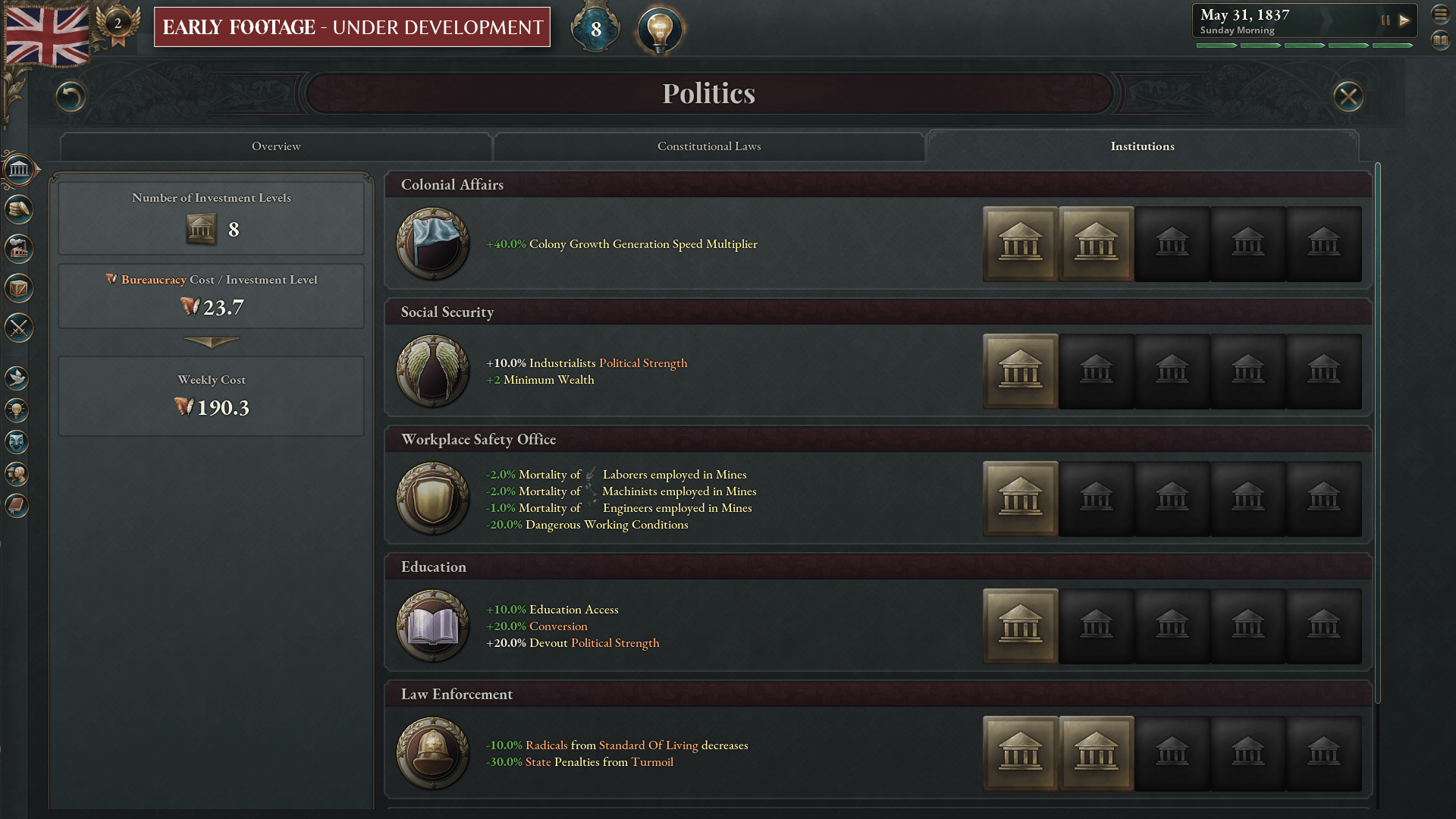
A Changing Political Landscape
Another extremely important part of Victoria 3 is politics; the Victorian era was tumultuous with revolutions, changing ideologies and societal disruption. This is reflected in the game with a politics tab where you can keep track of your government, your societies laws, the individual political parties that make up the political landscape of your nation and their wishes, as well as institutions which can have great effect upon various aspects such as Law Enforcement or Education.
Your political parties will be supported by your populace which can engage in active voting; who this is depends on your laws; some nations start as autocracies, whereas others will have the beginnings of reform such as census suffrage, with full universal suffrage or even anarchy an option if you’re able to reform the government to your wishes. Doing this will require you to carefully steer your nation down your intended route – generally this means better education and a higher standard of living will be required to facilitate driving your populace toward the more liberal parties, which unlock taxation reform or better education options. These are all useful to further your aims.
Keeping an eye of the makeup of your population in your Victoria 3 run and their needs is paramount, as different ethnicities and backgrounds will require different goods. Some may require tobacco, some may require different types of food other than basic grain; keeping tabs on what you need to produce to keep your population happy is extremely important, and can change over time with migration and emigration as well as the evolving goods requirements of a more modern era.

The Building Blocks Of Society
Important to both your economy and politics in Victoria 3 are buildings: these are used to produce goods, or refine them into a more expensive type. There are many types of building in the game, from farms and ranches up to textile and steel mills. As well as making goods, they provide jobs to your pops: the more advanced the job, the higher the wage they will provide. In general, you will want to make sure you have enough jobs around to reduce unemployment so to be able to make sure they can buy the goods they require for their needs. Failure to do so will result in consequences, such as turmoil which will reduce the amount of tax levied or, if pushed far enough, outright rebellions and revolutions could occur.
As well as the various trade group types, there are 4 top level resources used to manage other areas, such as diplomacy, tax and decrees. These are bureaucracy, authority, influence, and money. Bureaucracy is used for tax collection, incorporating states (so that they can be taxed and full control of the land is in your hands), and can be increased by building more government buildings at the cost of needed more goods to sustain them. Influence is used mainly for consumption taxes on goods, in order to levy money if desperate, or passing decrees in order to impart various bonuses of your choosing in your selected province. Certain government types provide more of this resource.
Influence is mostly used for diplomatic purposes, both actions and plays. Generally, actions are used for smaller topics such as improving relations with a specific nation, whereas plays are for more widespread actions such as conquering another state or forcing a nation to trade with you. Diplomatic actions, when taken, can cause a diplomatic incident to occur; this allows other nations with interests in the region to intervene on either side and weigh their support for, or against, you.
Finally, money is used to gauge spending, mainly for importing goods or constructing buildings but also paying your government workers, and has a gold reserve you build up or spend over time. Debt can be accumulated if you’re desperate and have spent all your gold reserves as well, but if you go too far into it you can go bankrupt which can cause various bad events to take place in your nations and should be avoided if at all possible.
Another mechanic you’ll need to keep an eye on is technology; depending on your nation you may already have access to some more advanced techs at the start of the game, such as railways, but each nation has the same technological tree they use. Universities and the average level of education of your populace are used to generate innovations, and these are used to pay for new techs. These can range from the aforementioned railways if you don’t start with them, to steam power, to more advanced building construction, all the way up to cars and radio. Tech types are split between 3 screens: production, military and society.
Generally, production will unlock new goods or improve existing buildings at the cost of more advanced goods consumptions such as engines or large amounts of coal. Military improves your technological capacity to wage warfare, starting with Napoleonic style line infantry for many nations and ending with the advent of trench warfare and the proliferation of machines guns, trench warfare and early tanks and planes. Finally, society is used to improve various aspects such as education, to unlock more types of laws and government types amongst other things.
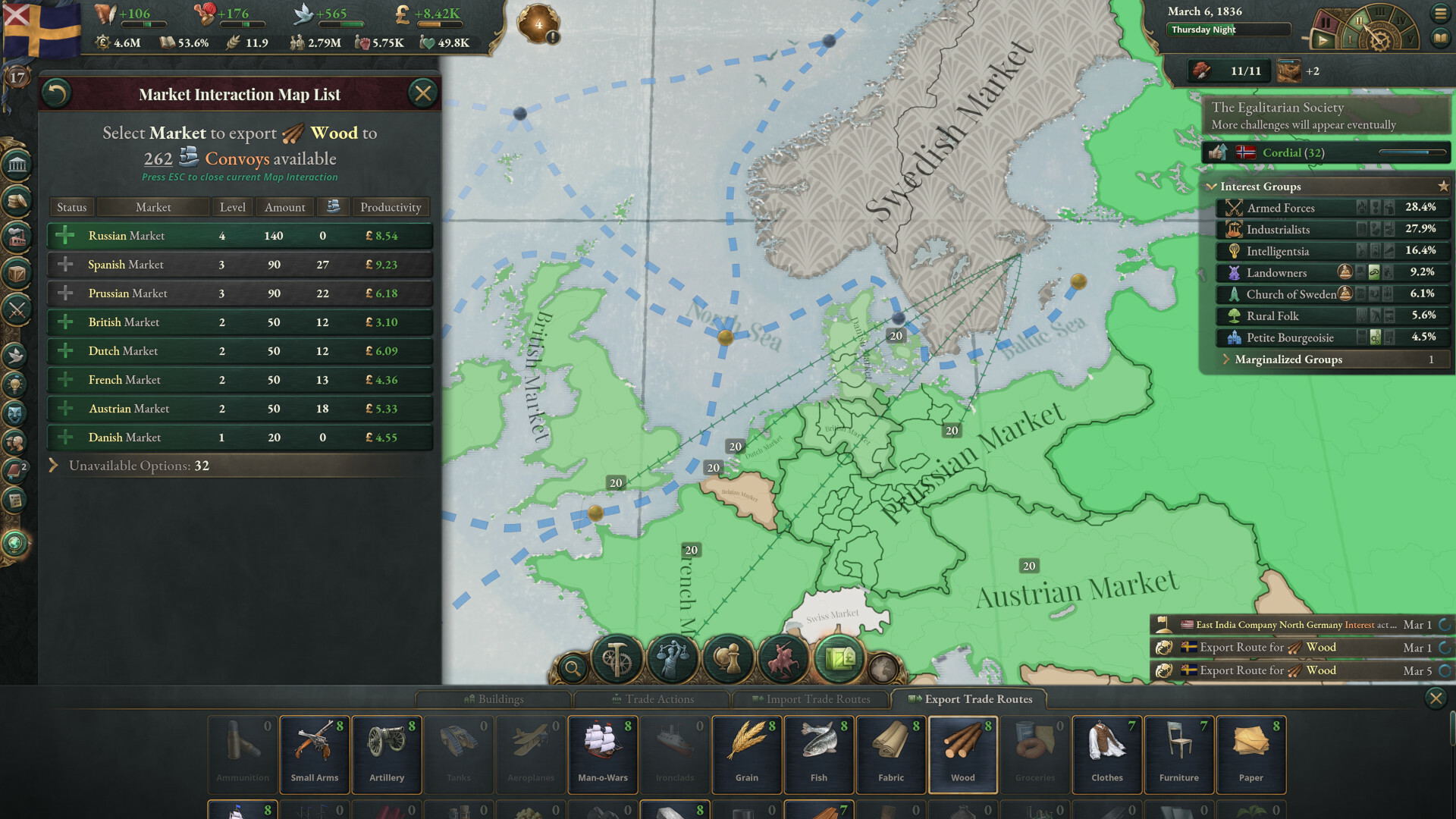
Guiding A Nation
Next up, there is a journal in the game which is used to keep track of various small missions to complete for small buffs; this can be range from expanding your engine production factories and gaining more efficiency in that industry temporarily, to in some nations completing unique missions for claims on territories or to affect political parties in various ways. These are fun to do, but aren’t a hard requirement and just add a bit of flavour to each individual game. I would like to see a few more of these down the line added, as it does feel like I’m repeating the same ones each game, and some more variety would be welcome.
In terms of nations feeling distinct from each other, in Victoria 3 it’s not highlighted via unique mechanics like in other Paradox games such as Europa Universalis; there aren’t unique mission trees, or unique mechanics. Instead, the starting position of each nation tells a story. Government types feel distinct from each other, as republics and monarchies can play differently, and the economic situation you start in has a vast impact on what you can actually achieve with you nation to begin with at least. There are some unique events for a couple of nations, such as the United States of America having some related to the abolition of slavery and the build up to the historical civil war that took place, but its up to you to decide whether you want to tread historically or change the course of history.
The graphics and sound for Victoria 3 are excellent; the Victorian era map that appears when you zoom out to show the world is easily readable and pretty to look at, and zooming into the world showcases a pretty map with trains and ships showing trade routes and movement between cities. Over time, as your cities expand, they’ll grow in the province they’re in on the map, showing your transition from rural to urban lands. The soundtrack is excellent and complements the setting very well, and the sound effects are individual to each menu and provide an excellent backdrop and aren’t jarring.
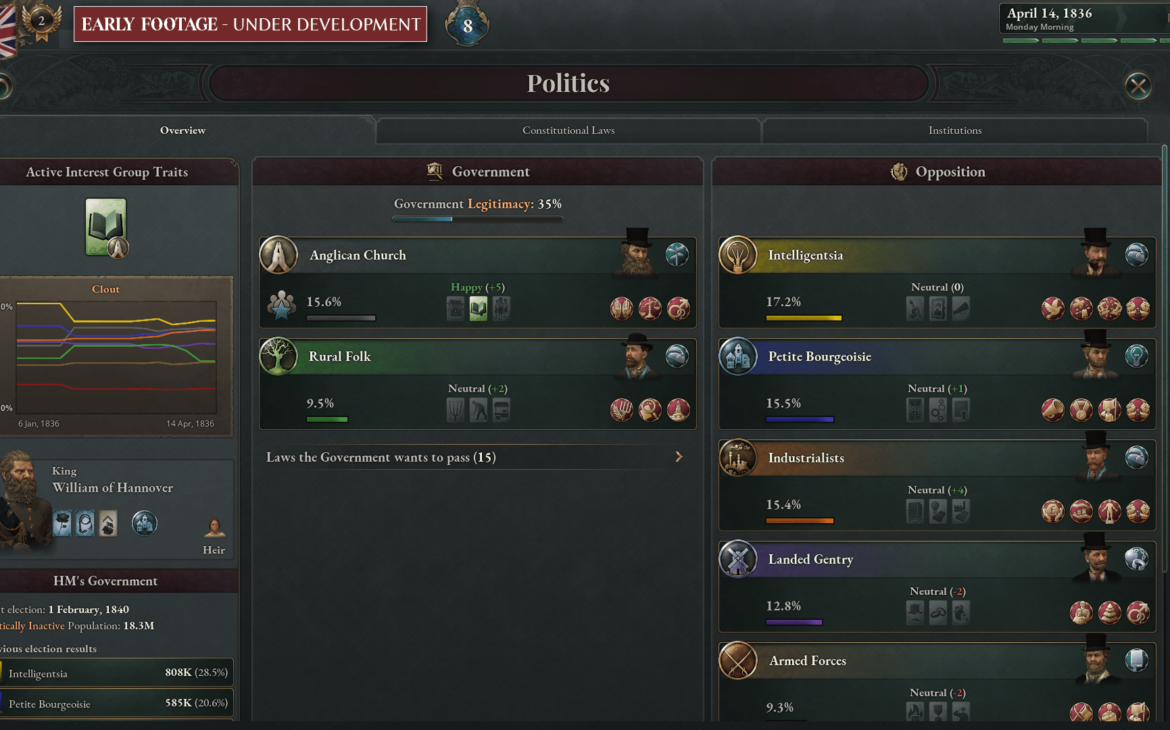
High Society
A last couple of points: the AI in Victoria 3 can be a bit weak at times, and to a degree exploitable, but can also surprise from time to time, especially in the early game. Like most paradox games, the later in the game you go the more the AI can drop off and struggle to match the player, but as Victoria 3 only last 100 years compared to the several hundred years in other titles this is less of a problem in some ways. I have noticed though, that it struggles to start up more advanced industries such as steamships and more advanced resource types such as oil, and this allows the player to leapfrog in GDP as they will have such a big economic advantage when they have built their own economy up just enough to get some of the more advanced techs active.
In addition, the AI does seem really bad at being able to deal with internal turmoil and will often fall to revolts or break apart due to rebellions, and I’m hoping that Paradox can address this. Every game, I will see multiple nations such as the UK or USA break apart or suffer internal rebellions, often several times in a row. The UK especially suffers due to this problem. This seems to have been lessened on the final pre access patch I had access to, however.
In addition, the game did end up crashing a few times on my review version of the game. I hope that the instability is fixed in the release version, and it’s very possible that the crashes will be limited to the preview, but is something to note that could occur in the full release.
Finally, warfare can be frustrating; armies are assigned to fronts, and then battles automatically take place after the armies have manoeuvred for an advantage. Unfortunately, the battles that break out can be incredibly frustrating at times; despite outnumbering and having a huge tech advantage and better generals, there were many times that the battles just would not go in my favour. This was due to the defenders generally have a huge advantage, and later in the game this does make sense, but I did have this occur a lot in the first 20-30 years before many of the techs which increase defence have been researched. What would happen is the AI would always somehow get engagements where they would locally outnumber me, even when overall I outnumbered them 5-1 or more. This did get pretty frustrating to deal with, but overall isn’t a deal-breaker by any means.
Victoria 3 is an excellent addition to the Grand Strategy genre that I think will very much live up to expectations. There are a few issues but it does many more things right than it does wrong. Victoria 3 is a highlight amongst strategy games released this year, and I’m extremely impressed by the developers making peace just as fun and engaging as war. This is a must play for anyone who likes grand strategy titles, but wants to play something a little different compared to its competitors.

Victoria 3 is launching on PC via Steam on October 25th, 2022.
Developer: Paradox Development Studio
Publisher: Paradox Interactive
Disclaimer: In order to complete this Review, we were provided with a promotional code from the publisher. For our full review policy, please go here.
If you enjoyed this article or any more of our content, please consider our Patreon.
Make sure to follow Finger Guns on our social channels. Twitter, Facebook, Twitch, Spotify or Apple Podcasts – to keep up to date on our news, reviews and features.
